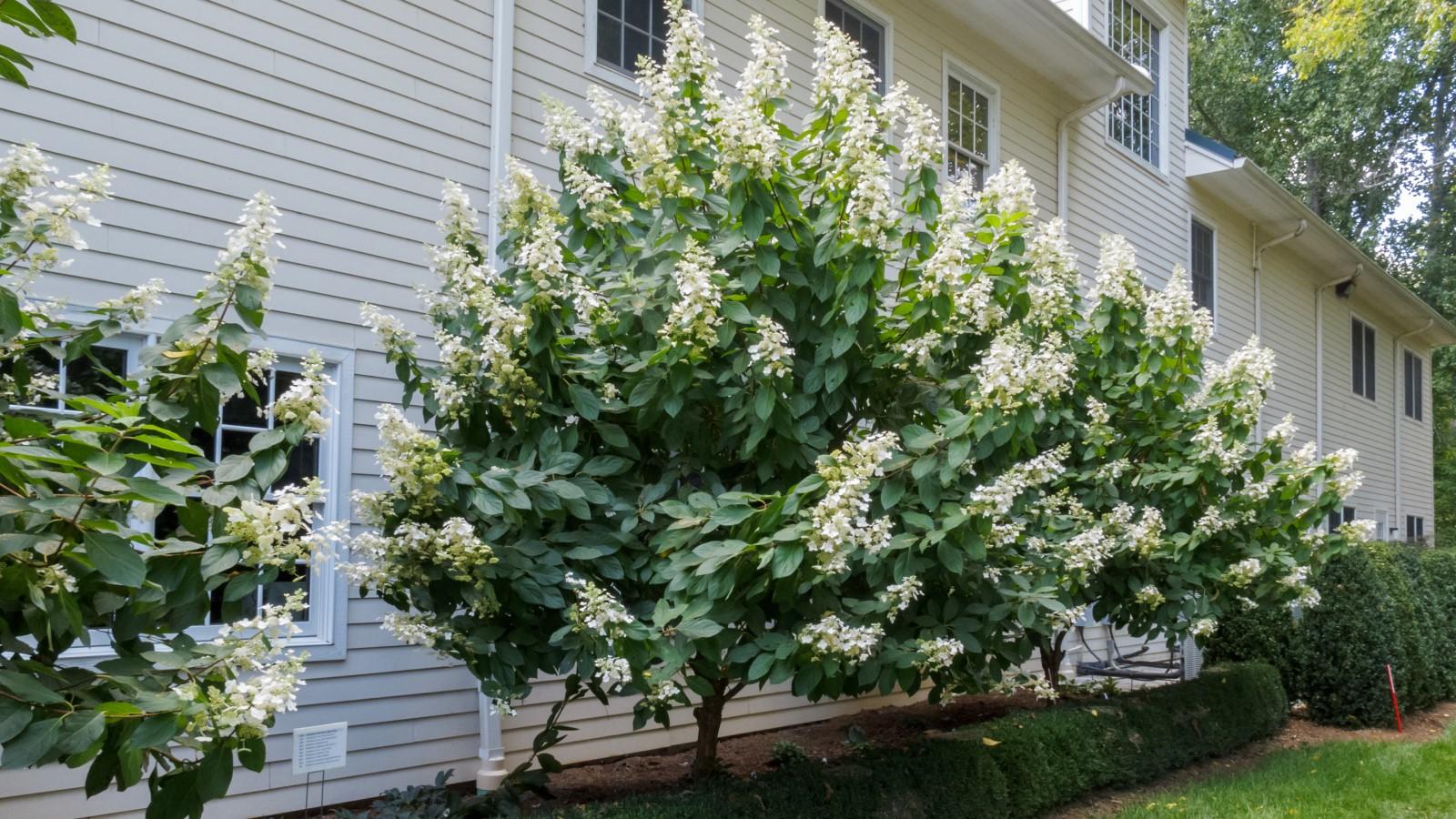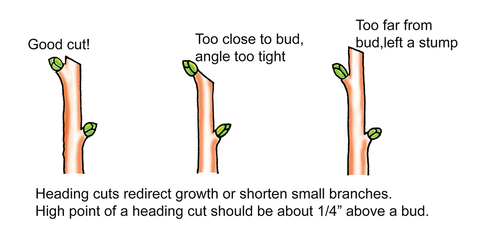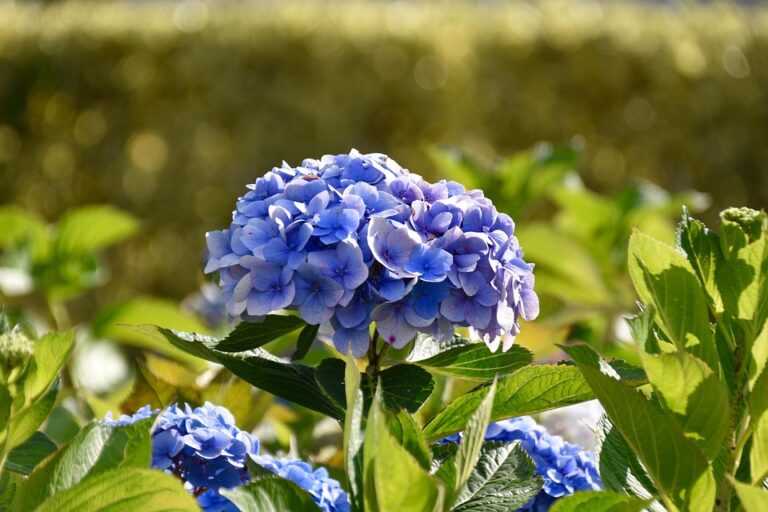Hydrangea Pruning Chart: When to Prune Each Type (Old Wood vs New Wood)
Stop guessing and start pruning with confidence. This expert, species-by-species guide shows exactly when and how to prune bigleaf, mountain, oakleaf, panicle, smooth, and climbing hydrangeas—without sacrificing next year’s blooms.
That “Why Won’t My Hydrangea Bloom?” Moment
If you’ve ever “tidied up” hydrangeas in fall only to stare at leaf-only shrubs all summer, you’re not alone. Some hydrangeas bloom on last year’s wood (old wood), others on this year’s wood (new wood). Prune at the wrong time and you literally remove the buds you waited all year to see. After a decade-plus of fixing bloomless summers, here’s a simple, printable chart and step-by-step playbook you can trust in any climate. [Proven Winners] [RHS] [Iowa State Extension]
The 15‑Second Answer:
Old wood bloomers (bigleaf/macrophylla, mountain/serrata, oakleaf/quercifolia, climbing/petiolaris): prune right after flowering in summer; avoid fall/late-winter pruning or you’ll cut off next year’s buds. [The Old Farmer’s Almanac] [Proven Winners]
New wood bloomers (smooth/arborescens, panicle/paniculata): prune late winter to early spring; can be cut back hard if needed. [University of Maryland Extension] [UMN Extension]
Rebloomers (some bigleaf & mountain): avoid hard pruning; remove only dead wood in spring or trim lightly right after bloom. [Proven Winners] [The Old Farmer’s Almanac]
Quick-Reference Hydrangea Pruning Chart (Old Wood vs New Wood)
| Hydrangea Type | Blooms On | When to Prune | Key Notes |
|---|---|---|---|
| Bigleaf (Hydrangea macrophylla) | Old wood (some rebloomers on both) | Right after flowering | Deadhead to first strong buds; thin oldest canes; avoid fall/late-winter hard cuts. [The Old Farmer’s Almanac] [RHS] |
| Mountain (Hydrangea serrata) | Old wood (some both) | Right after flowering | Treat like bigleaf; light shaping only. [The Old Farmer’s Almanac] [RHS] |
| Oakleaf (Hydrangea quercifolia) | Old wood | Right after flowering (early summer) | Minimal shaping; remove dead/crossing; no spring hard cuts. [Gardening Know How] |
| Climbing (Hydrangea anomala ssp. petiolaris) | Old wood | After flowering | Shorten strays; stagger major reductions over years to preserve bloom. [RHS] |
| Smooth (Hydrangea arborescens) | New wood | Late winter/early spring | Cut to ~12 inches or reduce by ~1/3; head to fat buds. [UMD Extension] [UMN Extension] |
| Panicle (Hydrangea paniculata) | New wood | Late winter/early spring | Framework back to bud pairs; selective rejuvenation. [RHS] [Iowa State Extension] |

Type-By-Type Pruning Guides
Bigleaf (Hydrangea macrophylla) — Old Wood, With Reblooming Exceptions
Identify: Rounded mounds 3–6 ft with mophead or lacecap blooms; color often shifts with soil pH (blue acidic, pink alkaline). Rebloomers (e.g., Endless Summer/Let’s Dance) flower on both old and new wood. [UGA Extension] [The Old Farmer’s Almanac]
When to prune: Traditional bigleaf: prune immediately after flowering. Rebloomers: prune minimally—remove dead wood in spring or lightly trim after first flush; if winter kills buds, a light late-winter cleanup won’t prevent new-wood blooms. [Proven Winners] [The Old Farmer’s Almanac]
How to prune: After bloom, deadhead mopheads to the first strong bud pair; lacecaps can be cut to the second pair of leaves after flowering. In spring, remove winterkilled tips once growth begins and thin 1–2 oldest canes at the base to renew. In my experience, heavy shearing is the #1 cause of “no flowers” the next summer. [RHS] [Proven Winners]

Mountain (Hydrangea serrata) — Old Wood (Often Compact)
Identify: Lacecap flowers on a smaller shrub; similar timing to bigleaf, sometimes better cold tolerance depending on cultivar. [RHS]
When & how: Lightly after bloom; otherwise, spring removal of dead wood only. Deadhead to first strong buds; thin a few old canes if needed for airflow. Some serrata cultivars rebloom—use a conservative approach to retain flowers. [The Old Farmer’s Almanac] [Proven Winners]
Oakleaf (Hydrangea quercifolia) — Old Wood, Minimal Pruning
Identify: Oak-shaped leaves; conical panicles aging from white to pink to tan; handsome cinnamon bark adds winter interest. [Chicago Botanic Garden]
When to prune: Right after flowering (June–July). Avoid late winter or spring pruning that removes old-wood buds. [Gardening Know How]
How to prune: Use a light touch—remove dead/diseased/crossing wood; for shape, cut to the ground or just above a bud pair; deadhead spent panicles at their junction. [Gardening Know How]

Climbing (Hydrangea anomala ssp. petiolaris) — Old Wood Vine
Identify: Self-clinging vine with lacecap-style flowers; most blooms form high on the plant. [RHS]
When & how: After flowering—shorten wayward shoots; for major size reductions, stagger over 3–4 years to avoid multi-year bloom loss. Early spring removal of winter-damaged wood is fine. [RHS] [Chicago Botanic Garden]
Smooth (Hydrangea arborescens) — New Wood, Easygoing
Identify: Dome-shaped summer heads (e.g., ‘Annabelle’); suckering habit; can flop without structural pruning. [Chicago Botanic Garden]
When to prune: Late winter to early spring. Many gardeners cut to ~12 inches for strong, upright regrowth; some cut nearly to the ground for taller straight stems. In my experience, a firm late-winter cut is the antidote to flopping. [UMD Extension] [Iowa State Extension]
How to prune: Make heading cuts just above a “fat” bud; generally safe to remove up to one-third of height to maintain framework and vigor. [UMN Extension] [Proven Winners]

Panicle (Hydrangea paniculata) — New Wood, Structural Options
Identify: Cone-shaped panicles; sun-tolerant; can be trained as a small tree or kept shrubby. [UGA Extension]
When to prune: Late winter to early spring; many wait to enjoy dried panicles as winter interest. [The Old Farmer’s Almanac] [UMN Extension]
How to prune: Create a strong framework by cutting last year’s stems back to a healthy bud pair (10–24 inches, per desired height). Rejuvenate old shrubs by removing several of the largest stems near ground level in late winter/early spring. Avoid overly hard cuts that erase the plant’s graceful habit. [RHS] [Iowa State Extension] [UGA Extension]

Cut Anatomy: Where, How, and How Much
Heading cuts: Make the high point of the cut about 1/4 inch above a bud; angle gently for clean healing. Target plump “fat buds” on new-wood types when reducing height. [UMN Extension]

Old-wood hydrangeas: Deadhead to the first strong bud pair; thin 1–2 oldest canes at the base in spring for renewal; avoid shearing back which removes flower buds. [RHS]
New-wood hydrangeas: Generally safe to reduce by ~1/3 for structure; smooth can be reduced to ~12 inches; panicles respond well to annual framework cuts. [Proven Winners] [UMD Extension]
Seasonal Timing By Region
Cold winter climates (Upper Midwest/Northeast): New-wood pruning typically late March–April after deep freezes; remove dead wood on old-wood types after leaf-out confirms damage. Avoid late-fall pruning that can stimulate tender growth killed by winter. [Iowa State Extension] [Chicago Botanic Garden]
Milder climates (Mid-Atlantic/Southeast): New-wood pruning often Feb–March; old-wood trimming right after bloom. Note: cold snaps can still ruin early growth—prune conservatively and protect buds when hard freezes threaten. [UGA Extension] [NCSU Macon County Extension]
Rule of thumb: Spring bloomers after bloom; summer bloomers in late winter—then apply species logic (old vs new wood). [NCSU Macon County Extension]
Common Mistakes And How To Avoid Them
- Pruning old-wood hydrangeas in fall/late winter: removes preformed buds—confine shaping to just after bloom.
“I always cut them down in October.”→ Don’t. [The Old Farmer’s Almanac] - Cutting panicles/smooth too late in spring: heavy late cuts can delay bloom; aim for dormant-season pruning. [UMN Extension]
- Over-shearing new-wood types: removing more than ~30% can weaken structure and vigor—build a stable framework over time. [Proven Winners]
- Expecting blooms after hard renovation of old-wood shrubs: flowers may pause a year after major cutbacks—renovate gradually. [RHS]
Troubleshooting: “Why Didn’t It Bloom?”
Winter kill of terminal buds (old-wood types): Leave spent blooms over winter to shield buds; only remove dead tips after growth resumes. [RHS]
Wrong-timing pruning: Verify species and reblooming habit before cutting; if unsure, don’t prune—most hydrangeas bloom with just dead wood removal at the right time. [Proven Winners]
Deep shade or overfertilizing nitrogen: Shade and high-N feeding favor leaves over flowers; adjust site/light and use balanced nutrition. [Chicago Botanic Garden]

Tools And Techniques I Recommend
- Bypass pruners for live stems; loppers for base cane removal; a pruning saw for older canes on panicles. Clean blades between plants to prevent disease spread. [RHS]
- Smooth hydrangea tip: A firm late-winter cut (~12–15″) yields sturdier midsummer stems versus cutting too low or too light. [UMD Extension]
- Panicle shaping: Annual framework cuts to bud pairs create a durable scaffold and consistent flowering. [RHS]

FAQs
Is It Too Late To Prune My Hydrangeas This Year?
Old-wood types: If buds are set (late summer onward), wait to shape until right after they flower next summer; remove only dead/damaged wood after leaf-out confirms it. New-wood types: Prune in late fall after dormancy or in late winter/early spring without sacrificing flowers. [The Old Farmer’s Almanac] [Proven Winners] [UMN Extension]
Can I Cut Bigleaf Hydrangeas To The Ground?
You can, but you’ll remove all flowers for the coming season. Better: thin 1–2 oldest canes at the base after bloom and deadhead lightly; renovate gradually if needed. [RHS]
How Hard Can I Prune Panicle Or Smooth Hydrangeas?
Generally safe to remove up to ~1/3 for structure; smooth can be reduced to ~12 inches; panicles can be cut back to a low framework (10–24″). Avoid over-thinning the framework. [Proven Winners] [UMD Extension] [RHS]
Do Rebloomers Change The Rules?
Yes—reblooming bigleaf and mountain hydrangeas flower on both old and new wood. To avoid sacrificing either flush, prune minimally: remove only dead wood in spring or trim lightly right after the first bloom cycle. [Proven Winners] [The Old Farmer’s Almanac]

Next Steps
- Identify your type using bloom and leaf cues above.
- Book your pruning window on the calendar using the chart.
- Set up your tools and follow the cut anatomy for clean results.
References
- The Old Farmer’s Almanac: When to Prune Different Kinds of Hydrangeas
- RHS: Hydrangea Pruning Guide
- Proven Winners: When & How to Prune Hydrangeas
- University of Maryland Extension: Pruning Hydrangeas
- UMN Extension: Pruning Hydrangeas for Best Bloom
- Iowa State Extension: Pruning Hydrangeas
- Chicago Botanic Garden: Pruning Hydrangeas
- UGA Extension Forsyth County: Identify Hydrangeas to Know When to Prune
- Gardening Know How: Pruning Oakleaf Hydrangea
